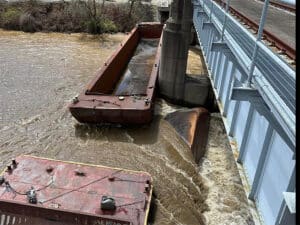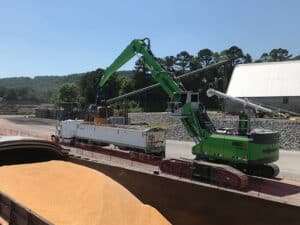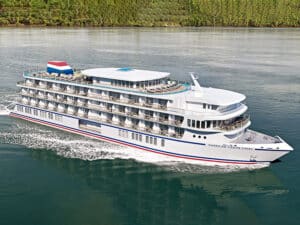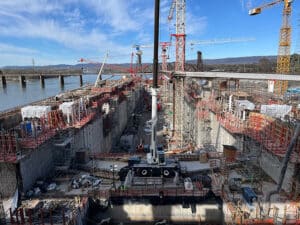
How does U.S. waterways competitiveness stack up in world terms?
Written by Marine Log Staff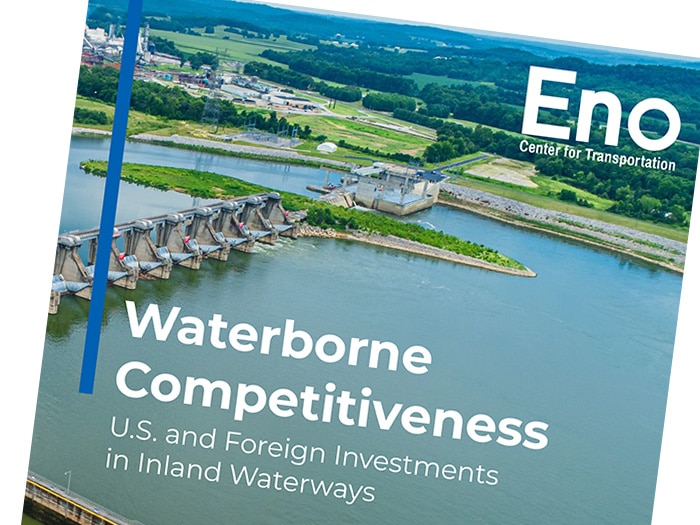
A new study released today focuses on the current state of the U.S. inland waterways system and compares it to others from around the world. Commissioned by the National Waterways Foundation (NWF). the study — Waterborne Competitiveness: U.S. and Foreign Investments in Inland Waterway — was conducted by the Eno Center for Transportation in Washington, D.C.
Case studies of river systems from Europe (Rhine River, Danube River), Asia (Yangtze River, Mekong River), and South America (Amazon River, Paraná-Paraguay Rivers) compare investment levels, commodity flows, governance, and investment priorities. The case studies also reveal the effects of foreign direct investments on internal and external good movement, including the role of investment in other uses such as damming for hydroelectric power, have on the capacity to move goods to global markets. .
TWO KEY FACTORS
The study finds that the ability for the United States to maintain a position of strength depends on a regular assessment of infrastructure needs and multimodal development strategies. Two factors in particular— the aging infrastructure and competition from other countries’ inland waterway network —pose a risk to the economic and national security advantage long enjoyed by shippers and the broader U.S. economy.
The case studies of six global rivers provide a unique set of political, economic, geographic, and social circumstances. Important lessons emerge about governance, investment priorities, and environmental pressures that offer lessons for U.S. inland waterways investment and multimodal freight policymaking.
The study concludes:
- The United States benefits from its inland waterways system contained within its borders and governance centralized with the federal government. Collaboration and coordination between countries that share a river system can be complex and challenging. Specifically, Europe’s rivers are well maintained and highly used despite disaggregated governance due to leadership at the European Union (EU) level. The U.S. Army Corps of Engineers, in collaboration with Congress, manages the U.S. waterways and prioritizes investments, which is much more efficient than coordinating across countries.
- The United States must watch the development of other nations’ freight waterway corridors with an eye toward economic competitiveness and national security. While freight traffic is currently relatively low, continued development on the Amazon and Paraná-Paraguay rivers represents significant threats to the cost-competitiveness of American exporters. State-owned Chinese companies are investing in facilities along those rivers, but environmental backlash and lack of coordination can limit growth. China’s investments in intermodal facilities on the Yangtze could further enhance its use, particularly connecting to other Chinese cities and to railways that lead to Europe. China’s involvement in the Mekong does not appear to prioritize freight shipments but has clear geopolitical implications. Europe’s already-developed systems are not a threat but can be a model for prioritizing reliability and connectivity on the rivers.
- The U.S. can benefit from more strategic, multimodal planning. Europe’s ability to move significant high-value cargo on the Rhine River is the result of a targeted policy strategy and regionally coordinated investments to improve operational reliability and connections to other modes. Outcomes like this require an intentional, coordinated, and fully executed strategy to encourage the private sector to invest where it makes economic sense.
- Increased investment levels from the Infrastructure Investment & Jobs Act (IIJA) offer an opportunity to greatly enhance the reliability and usefulness of the U.S. inland waterways system. Clearing the backlog of U.S. projects is needed to bring some facilities into more modern practice. That investment, coupled with building on recent improvements to operational and maintenance practices, will be a significant boon to existing U.S. users.
“Low cost transportation on America’s inland waterway system often provides the advantage that allows American farmers and manufacturers to successfully compete in the world market. We must be alert to the investments being made in the waterways of other nations that can erode our advantage and, where necessary, invest to increase the efficiency of our system to stay ahead,” said Matt Woodruff, Chairman of the National Waterways Foundation. “Eno’s study thoroughly examines the state of other countries’ inland waterways and provides some lessons learned for the United States. It also underscores that economic competitiveness is closely tied to national security, and U.S. domestic waterways network investment is vitally strategic,” he continued. “It is concerning to note that China invests not only in its own waterways system but is making significant investments in waterways infrastructure in other countries with whom we compete.”
“Examining other countries reveals the significant advantages that the U.S. inland waterway system brings to exporters, the military, and the broader economy,” said Paul Lewis, Policy Director at the Eno Center for Transportation. “But it also highlights how important it is to monitor foreign investments in global rivers and sustain best practices for investment and operations to ensure that the U.S. system remains competitive.”


